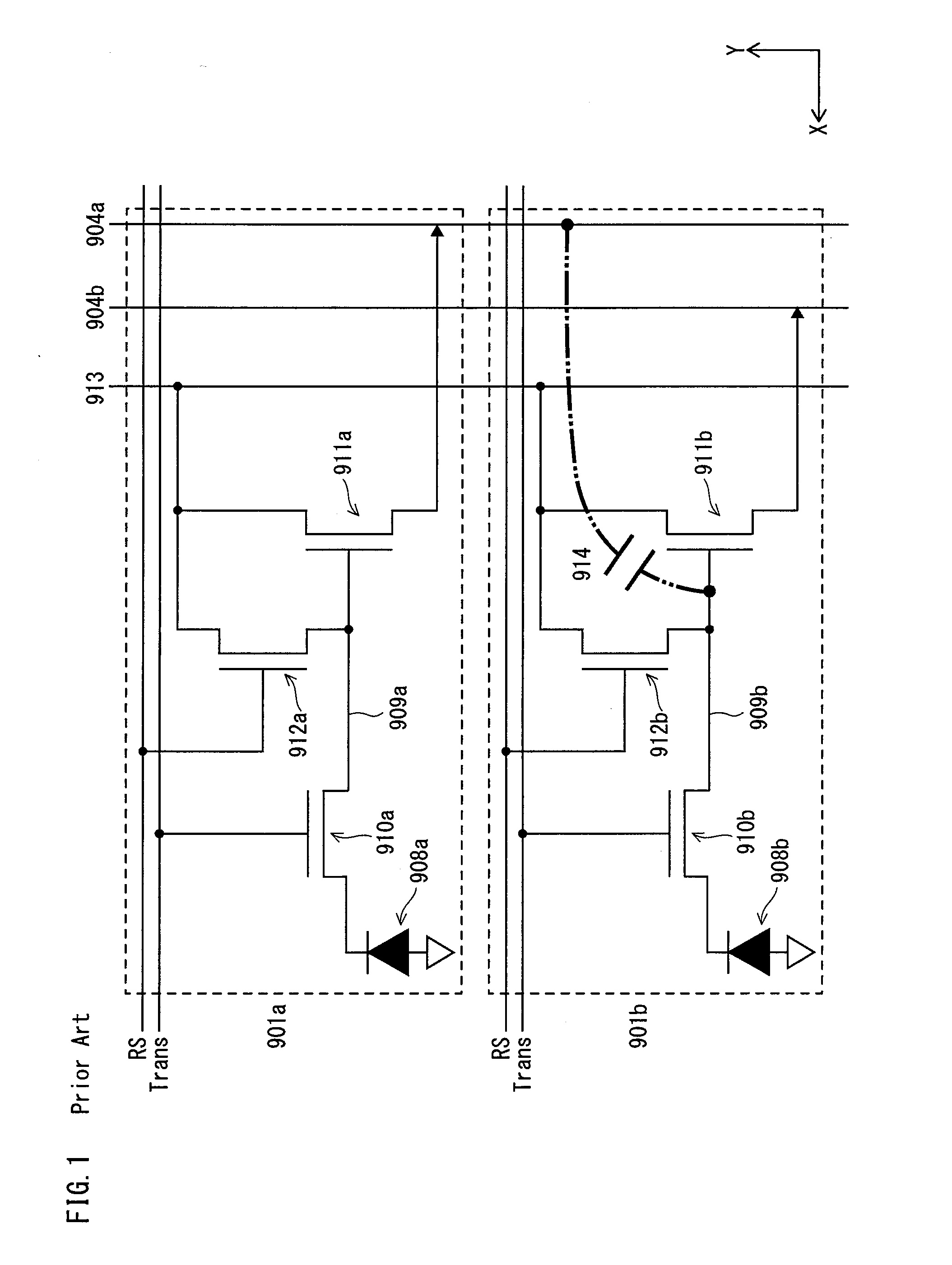Solid state imaging device capable of parallel reading of data from a plurality of pixel cells
- Summary
- Abstract
- Description
- Claims
- Application Information
AI Technical Summary
Benefits of technology
Problems solved by technology
Method used
Image
Examples
embodiment 1
1. Overall Structure
[0059]The following describes the overall structure of a solid state imaging device 1 according to Embodiment 1 of the present invention, with reference to FIG. 3.
[0060]As shown in FIG. 3, the MOS-type solid state imaging device 1 has a pixel region 10 and a circuit region. The pixel region 10 is composed of a plurality of pixel cells 101a and 101b. The circuit region is composed of various circuits, including a vertical scanning circuit 21, a signal processing circuit 22, a horizontal scanning circuit 23, and an amplifier circuit 24.
[0061]In the pixel region 10, the plurality of pixel cells 101a and 101b are arranged in an array, which is one example of a two-dimensional arrangement. The array consists of (n+1) pixel cells per row and (m+1) pixels per column. In the pixel region 10, a transfer control signal line Trans and a reset signal line RS are provided for each row. In addition, a pair of output signal lines 104a and 104b, a pixel selecting line 113, and c...
embodiment 2
[0091]The following describes the structure of a MOS-type solid state imaging device according to Embodiment 2, with reference to FIGS. 12-18.
1. Layout of Pixel Cells 301a and 301b
[0092]The following describes the layout of pixel cells 301a and 301b of the MOS-type solid state imaging device according to Embodiment 2, with reference to FIGS. 12-14.
[0093]Since the layout of Embodiment 1 shown in FIG. 5 is commonly applicable to the MOS-type solid state imaging device according to Embodiment 2, no further illustration and description thereof is given here.
[0094]Similarly to the MOS-type solid state imaging device according to Modification 1 (see FIG. 10) and as shown in FIG. 12, the MOS-type solid state imaging device according to Embodiment 2 has dummy lines 315 each disposed to extend in the Y direction in parallel to the pixel selecting lines 113 in a manner that first layers 304a1 and 304b1 of the output signal lines as well as the charge storage portions 109a and 109b are sandwi...
embodiment 3
[0118]The following describes the structure of a MOS-type solid state imaging device according to Embodiment 3, with reference to FIG. 20A. Note that the pixel cells 101a and 101b are respectively identical in structure to the pixel cells 101a and 101b of the MOS-type solid state imaging device according to Embodiment 1. In addition, the output signal lines 104a and 104b and other components are identical in structure to the corresponding components described above. Thus, those identical or similar components are not shown in the figures.
[0119]As shown in FIG. 20A, the MOS-type solid state imaging device according to Embodiment 3 has such an imaging region in which the pixel cells 101a and the pixel cells 101b are alternately disposed in the Y direction. In the X direction, on the other hand, each pixel cell 101a is adjacent to another pixel cell 101a, and each pixel cell 101b is adjacent to another pixel cell 101b.
[0120]With the above described arrangement of the pixel cells 101a ...
PUM
 Login to View More
Login to View More Abstract
Description
Claims
Application Information
 Login to View More
Login to View More - R&D
- Intellectual Property
- Life Sciences
- Materials
- Tech Scout
- Unparalleled Data Quality
- Higher Quality Content
- 60% Fewer Hallucinations
Browse by: Latest US Patents, China's latest patents, Technical Efficacy Thesaurus, Application Domain, Technology Topic, Popular Technical Reports.
© 2025 PatSnap. All rights reserved.Legal|Privacy policy|Modern Slavery Act Transparency Statement|Sitemap|About US| Contact US: help@patsnap.com



